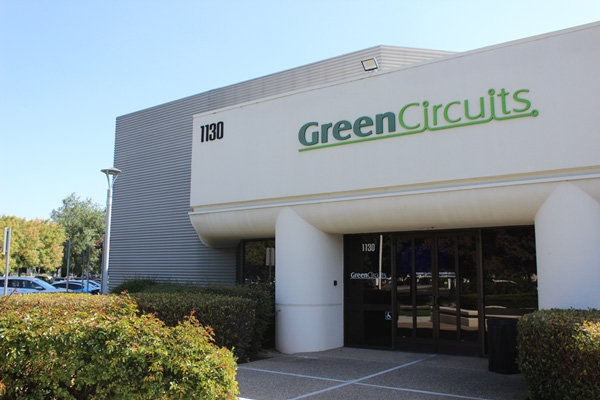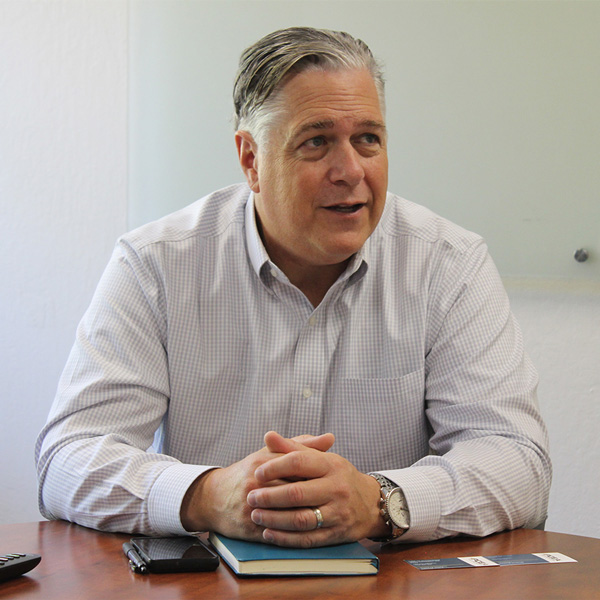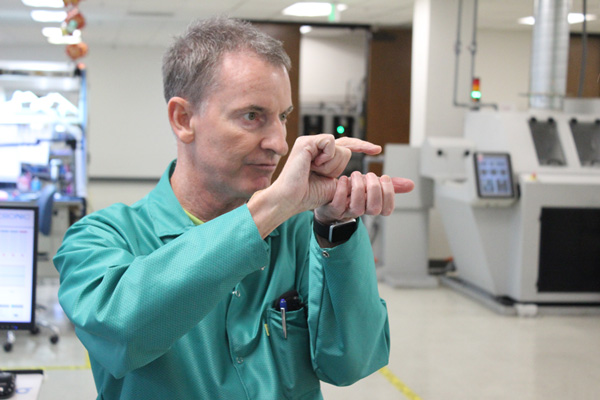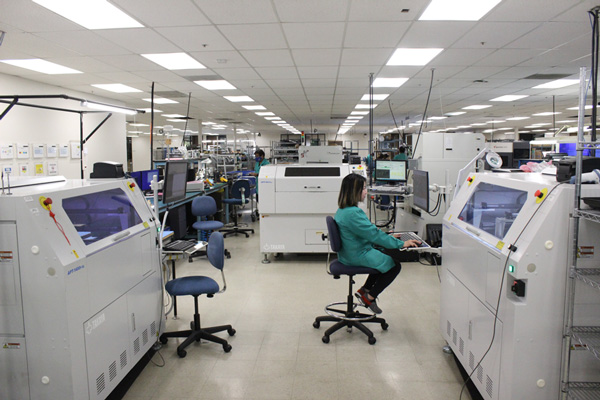Green Strength: The CIRCUITS ASSEMBLY EMS Company of the Year
An emphasis on speed – same day turns! – keeps Green Circuits’ customers coming back.
When we last visited Green Circuits, in late 2018, the company was just coming off its merger with Power Design Services. As we reported at the time, it was a $50 million entity with over 200 staff, and had just doubled its SMT capacity.
Much has changed in the ensuing five years: size (bigger), staffing (smaller), management (new). What hasn’t, however, is the emphasis on speed and high-complexity board assembly. Indeed, the EMS has leaned into those challenges and is now perhaps as good as anyone in North America in that regard.

Green Circuits occupies a bustling 60,000 sq. ft. site in San Jose.
After Joe O’Neil adeptly managed PDS and Green Circuits through its merger, the private equity firm behind the company turned over the reins to chief executive officer Michael Hinshaw, a seasoned veteran with a background in supply chain management in the specialty chemicals unit at Honeywell and Allied-Signal, and later as a management consultant in McKinsey’s semiconductor practice.

Chief executive officer Michael Hinshaw
At the helm of operations is COO Mark Evans, armed with a degree in electrical engineering and a wealth of experience from nearly 20 years in operations and management at Flex, Creation Technologies, Sparton and Hunter Technology. Together, they have cultivated a team built on previous connections, supported by CFO Richard Dutton and vice president of sales and marketing Adam Szychowski.
On the shop floor of the 60,000 sq. ft. plant, the SMT lines are set up so that 90% of kits can run on any of them. The company’s array of equipment includes five SMT lines: DEK Horizon stencil printers, Juki FX and KE placement machines, SPI on two lines, BTU convection reflow ovens (four with nitrogen), and a new JT wave. A new ERP with an MES module for traceability is planned for mid-January.
The smallest parts placed are 01005 and 0.3μm BGAs. AOI programming is performed offline but in-house. About 80% of the bare boards used are US-made (“We’ve never seen so much flex and rigid-flex,” says Evans.) The company averages seven inventory turns, and is approaching eight on an annualized basis.

The leadership team, including Michael Hinshaw and Mark Evans, pictured, has added an intense dose of Lean manufacturing to Green Circuits’ operations.
Post-reflow x-ray is performed on Nordson Dage XD7600NT and ViTech 5DX AXI machines, and the company is demoing a Scienscope Xspection 3000. Every product is x-rayed, the company says.
An Anda conformal coating machine is being added because, as Evans says, “Having it in-house was a major issue for customers. For a quickturn shop, we have to be quick.”
Three Takaya flying probe testers are set up in U-cell so one operator can run multiple machines.

The Takaya flying probe testers are set up in U-cell so one operator can run multiple machines.
Cleaning is performed using DI water on an Aqua Kleen Typhoon aqueous washer. Rounding out the SMT area are two BGA rework machines.
Rounding out the capabilities are box-build cells – also in U-cells, and designed and built by the respective operators because, as Evans says, “They know what they need and how they use it best” – and a failure analysis lab.
One interesting technology example we observed while touring the plant in September was double-stacked 0402 ceramic chips. The chips sit in a pocket where the bottom cap is in the recess and the top cap is above the surface. Other complex boards we saw included a 96-layer board Green Circuits builds for a semiconductor test application, and an assembly with more than 12,000 component placements.
Sweet Spots
Operational excellence is a hallmark of Green Circuits. Its sweet spot is five-day turns, but quickturns can be delivered in 1 to 3 days – and even same-day, at a premium. (We confirmed this twice to be sure we heard correctly.) Quotes are turned in 2 to 4 hours.
The typical lot size is 30 to 40 pieces. Low- to medium-volume orders number about 100 to 200 pieces. Green Circuits’ averages three changeovers per shift per line, with Evans noting: “We are running the next board almost as last board of previous order is exiting.”
Among the efficiencies Hinshaw’s team has implemented include training staff in different areas to increase flexibility. The firm conducts “all-hands” meetings on the first of each month to communicate its vision and spread customer feedback throughout the entire organization. Routine Kaizen events involve three to four layers of management. And Evans teaches a one-day class every month to sales, program managers and operators, which “helps break down barriers.”
Explains Evans: “We empower everybody. We want people at every level to make decisions. We are not afraid to admit mistakes. (If you don’t), you don’t find out what really happened.”
“We look for people who are speed-focused,” Hinshaw adds.
The emphasis has allowed Green Circuits to reduce its staff over the past years to 150, including seven process engineers and two Quality engineers, while more than doubling revenue. The single shift runs from 6 a.m. to 2:30 p.m., but some lines run until 5 p.m. Still, turnover has been slashed from 40% in 2019 to below 8% today.
Anonymous Clients
The end-market focus is familiar for US EMS companies: aerospace, medical, defense, satellite, automotive, semiconductor, robotics. Among the applications are EV and battery charging systems, air taxis, semiconductor equipment, satellite and rocket components, and solar and high-power boards. Certifications include ISO 9001:2015, ISO 13485:2016 and AS9100:2016.
Green Circuits targets customers that have high-complexity and high-speed demands. “They want quality and speed,” Hinshaw said. “If we can manage that, they tend to stay.” It currently serves hundreds of diverse customers globally.
“We can bring customers through early challenges, technical or supply chain,” says Evans. “We get them to a place we can support them to get them on their way.” Echoes Hinshaw: “We can take a customer from design to prototype to pilot production volumes, and help work out manufacturing issues before helping them transition to larger-scale production elsewhere.”
Future Plans
As it continues to grow in the Silicon Valley, Green Circuits is also casting its eyes elsewhere. Half of its specialty customers are based outside California, and when their calling card is extremely quick turns, proximity begins to matter.
Yet there’s “no urgency” to do an acquisition, says Hinshaw, but the possibilities of strategic regional investments are under consideration. Most important, he adds, is not the size of the target but its culture.
“When making an acquisition, traditionally you look at assets, customers, and talent. We start with culture first. Insofar as regions, it’s wide open. We look for market fit, for a balanced portfolio. It might be a service set that is compatible with ours, such as engineering.”
It’s not easy being Green, but it’s even harder being Green’s competitors. For setting a high bar for turns and capability, Green Circuits is the 2023 CIRCUITS ASSEMBLY EMS Company of the Year.
is president of the PCEA (pcea.net); mike@pcea.net.
Press Releases
- Aegis Software Expands its Presence in France and Partners with STPGroup
- Altus Adds Breakthrough Automated Inline Laser Depaneling System to its Line-Up
- Fuji America Promotes Chris Dayney to Technical Marketing Manager, Expanding Focus on Premium Technical Content
- BTU International Announces Strategic Manufacturing Expansion in Singapore to Strengthen Global Supply Chain







